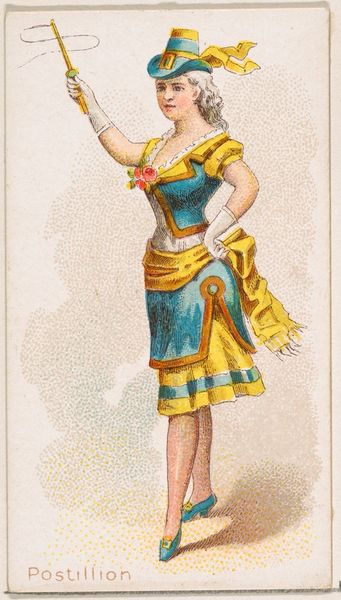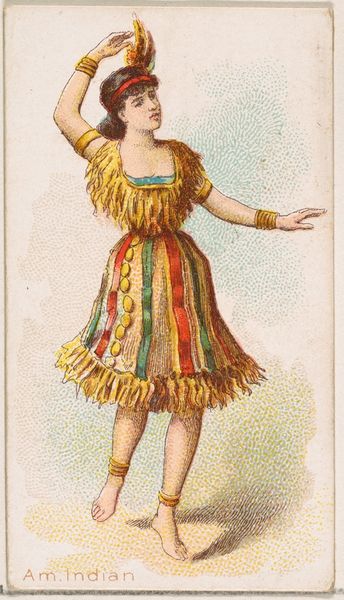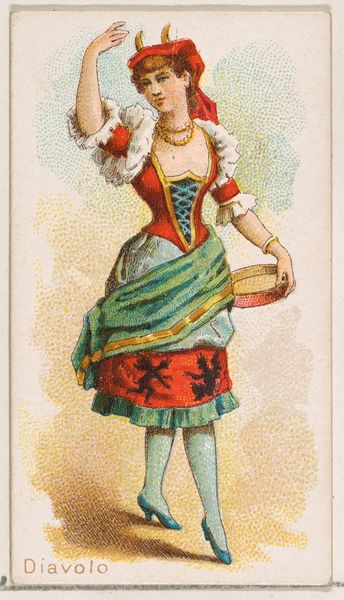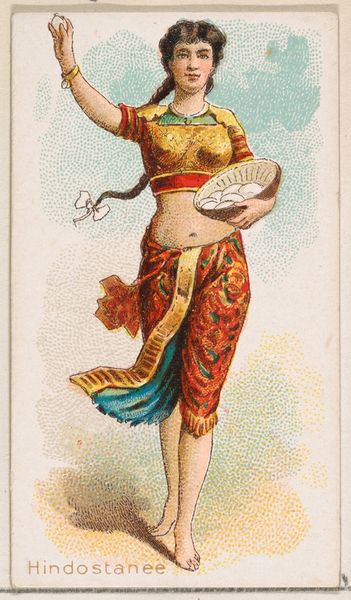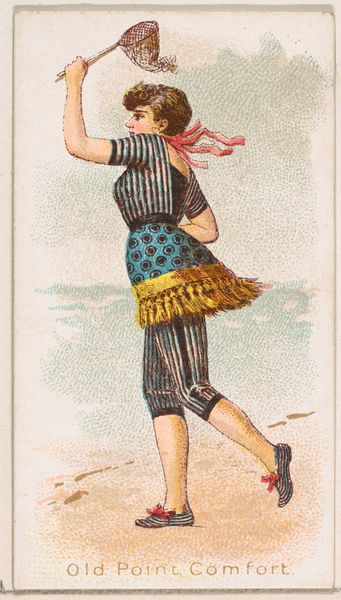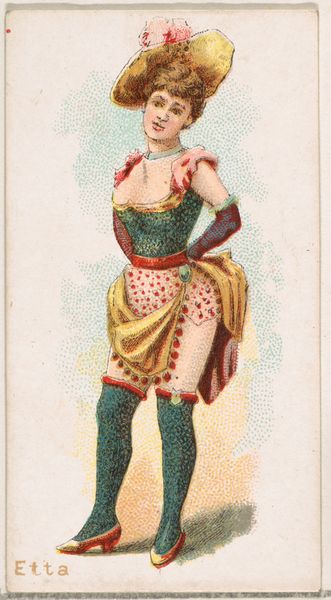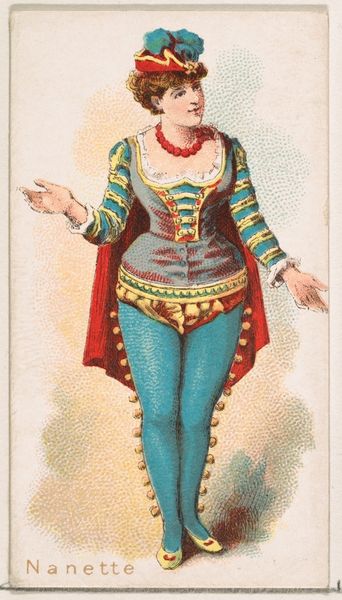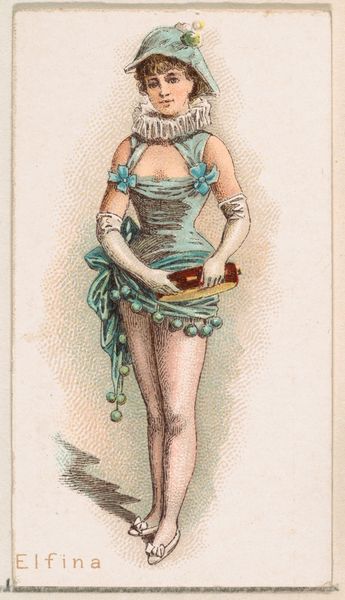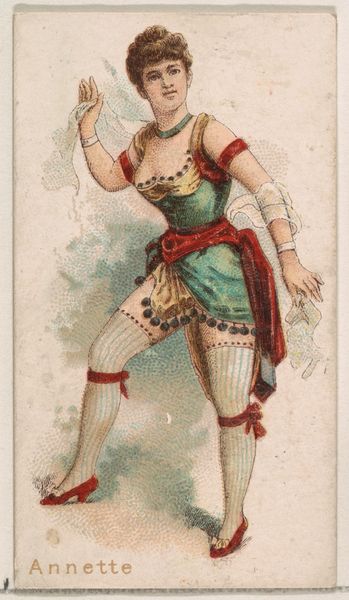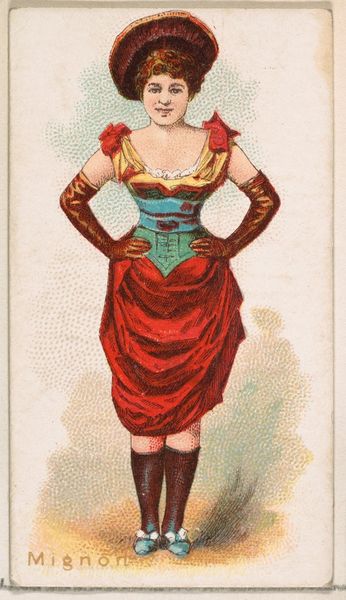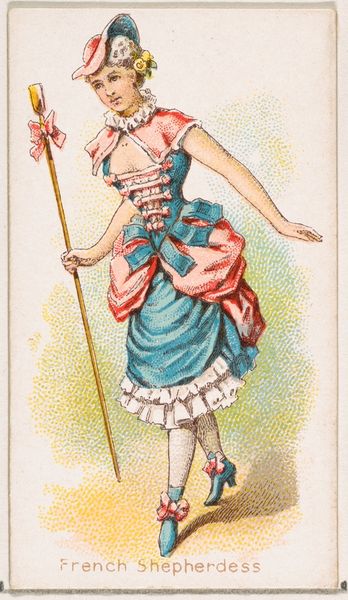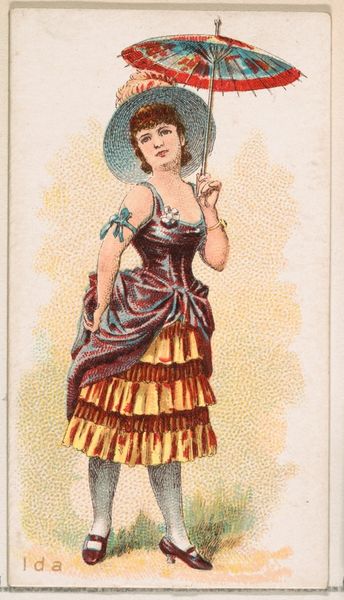
Pulchinella Dancer, from the Dancing Women series (N186) issued by Wm. S. Kimball & Co. 1889
0:00
0:00
drawing, coloured-pencil, print, watercolor
#
drawing
#
coloured-pencil
# print
#
impressionism
#
caricature
#
caricature
#
watercolor
#
coloured pencil
#
traditional style
#
watercolour illustration
#
genre-painting
Dimensions: Sheet: 2 11/16 × 1 7/16 in. (6.9 × 3.7 cm)
Copyright: Public Domain
Curator: This charming piece is "Pulchinella Dancer," a print made around 1889 by William S. Kimball & Co. as part of their Dancing Women series. The materials seem to be colored pencils and watercolor over a printed base. It resides here at the Metropolitan Museum. Editor: It's captivating! Such a buoyant, almost absurd mood. The colors feel so immediate, and her pose—the slight lean, the raised glass—creates a wonderful sense of movement. Curator: The print, likely a mass-produced promotional item, highlights interesting details of the tobacco industry at the time, Kimball being a notable manufacturer. These would have been inserted into cigarette packs as collectibles. Think about the means of production and distribution! Editor: Ah, so the symbol of the dancer… it was, quite literally, packaging. It takes on a double meaning when considering how performers can be commodities in a spectacle, almost as easily consumed as the cigarettes themselves. I wonder about the deeper roots of Pulchinella as a comedic figure in popular culture. Curator: Exactly. These cards weren't viewed as "high art" but rather as commercial ephemera. The choice of watercolor and colored pencil hints at both a perceived 'artistic' quality for the consumer and the efficiencies of printmaking for mass distribution. This piece reflects both artistic intention and industrial output. Editor: The costuming—the patchwork design, the pointy details—echo the commedia dell'arte tradition. It's designed to evoke laughter and lightheartedness. And her slight smile suggests that she, as Pulchinella, is fully aware of the performance of it all, this little theater on paper! Curator: Indeed! We're dealing with layered purposes. The symbolism works within a system designed to encourage smoking! Consider the implications of this art being essentially tied to the consumerism of that era, and the impact the accessibility of such images had in everyday life. Editor: Food for thought! Reflecting on Pulchinella's lively essence in that context helps me read this piece with richer depth, from her costume to her toast to us. Curator: Precisely. It moves our understanding past pure aesthetic appeal into an appreciation of its origins and distribution within an industrial, consumer-driven society.
Comments
No comments
Be the first to comment and join the conversation on the ultimate creative platform.
